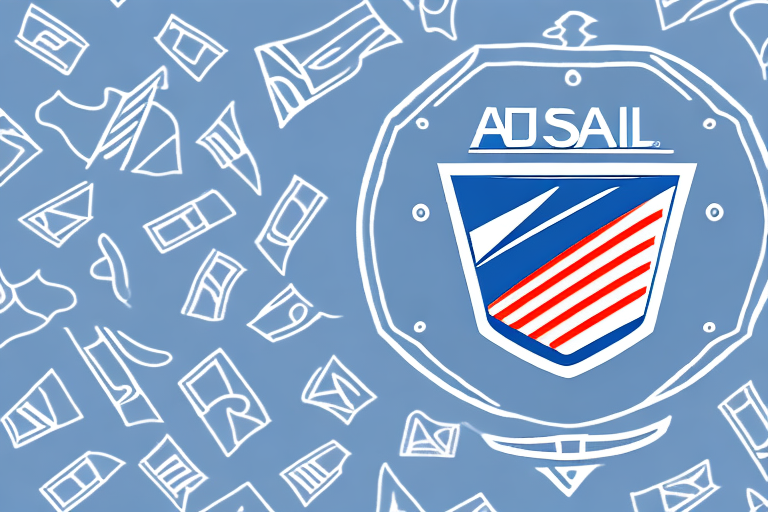Overview of USPS Insurance
Whether you are shipping valuable goods or important documents, the safety and security of your package should be a top priority. The United States Postal Service (USPS) is a popular choice for many due to its convenience and affordable prices. But what happens if your package gets lost or damaged during transit? Are USPS packages insured? In this comprehensive guide, we'll explore everything you need to know about USPS insurance policies, including eligibility, purchasing options, costs, coverage limits, filing claims, packaging tips, and alternatives to USPS insurance.
Understanding USPS Insurance Policies
USPS offers insurance policies to protect your package in case of loss, damage, or theft. Every USPS package automatically includes some level of liability coverage within the postage cost. However, this standard coverage may not be sufficient for valuable items. USPS Insurance policies provide additional coverage beyond the standard liability limit, which can be purchased online or at your local post office.
It's important to note that USPS insurance policies have certain restrictions and limitations. For example, USPS will not cover packages containing prohibited items such as explosives, flammable materials, and hazardous chemicals. Additionally, USPS may require proof of value for items with a declared value over $500. For more detailed information, refer to the official USPS Insurance Page.
If you need to file a claim for a lost or damaged package, you can do so online or by visiting your local post office. It's important to file your claim promptly and provide all necessary documentation, including proof of value and evidence of damage. USPS will then review your claim and provide compensation if it's approved.
Purchasing USPS Insurance
How to Purchase USPS Insurance for Your Package
Purchasing USPS insurance is straightforward. You can add insurance to your package when you print your shipping label via the USPS website or at your local post office. The cost of insurance varies based on the value of the package and the level of coverage you select. Higher package values will result in higher insurance costs.
It's important to note that USPS insurance only covers the value of the package and not any additional costs such as shipping fees or taxes. Additionally, certain items, such as perishable goods, hazardous materials, and live animals, may not be eligible for USPS insurance. Carefully reviewing the USPS insurance policy before purchasing is recommended to ensure your package qualifies for coverage.
What is the Cost of USPS Insurance?
The cost of USPS insurance depends on the value of the package and the level of coverage you choose. According to the USPS rates, insurance coverage is available for packages valued up to $5,000. You can calculate the exact cost using the USPS online calculator. For instance, shipping a package valued at $500 with full insurance coverage would cost approximately $12.50.
Keep in mind that USPS insurance does not cover shipping fees or taxes, and certain items like perishable goods and hazardous materials are excluded from coverage. Always check the USPS website for a complete list of prohibited items and to verify your package's eligibility for insurance before making a purchase.
USPS Insurance Coverage Limits
USPS insurance policies have varying coverage limits depending on the type of shipping service selected. For example:
- Priority Mail Express: Up to $1,000 of coverage
- Priority Mail: Up to $50 of coverage
- First-Class Mail: Up to $50 of coverage
It's essential to recognize that USPS insurance does not cover consequential damages, such as loss of income or profits resulting from the loss or damage of the package. Additionally, certain high-value items like jewelry, precious metals, and cash may have lower coverage limits or may not be covered at all. Always verify with USPS or your shipping provider to ensure that your package is adequately insured and that you understand the coverage limitations.
Filing a Claim
How to File a Claim for a Damaged or Lost Package
If your USPS insured package is lost, damaged, or stolen during transit, you can file a claim to receive compensation. To file a claim, you'll need to provide proof of the package's value, such as a sales receipt, and payment of the insurance fees. Claims can be filed online through the USPS Claims Center or at your local post office. It’s crucial to file your claim as soon as possible, as there are time restrictions for filing.
Filing a claim does not guarantee compensation. USPS will investigate the claim to determine if the package was lost or damaged due to their negligence. If approved, you will receive compensation for the value of the package and the cost of shipping. If the claim is denied, you have the option to appeal the decision or pursue legal action against USPS.
Packaging Best Practices
Tips for Packaging Your Items to Ensure Proper Insurance Coverage
Proper packaging is essential to reduce the risk of damage or loss during transit, regardless of the insurance coverage you purchase. Here are some best practices:
- Use sturdy and durable boxes or envelopes appropriate for the item.
- Incorporate sufficient cushioning materials, such as bubble wrap or foam peanuts, to protect the contents.
- Securely tape all seams and edges of the package using strong packing tape.
- Avoid allowing any movement inside the package by filling empty spaces.
- Seal the address label with clear tape to prevent smudging or tearing.
Adhering to these packaging guidelines not only helps protect your items but also ensures that your package meets USPS requirements for insurance coverage.
Pros and Cons of USPS Insurance
Pros
- Reasonably priced insurance coverage
- Convenient to purchase insurance when printing shipping labels
- Covers packages lost or damaged in transit
- Accessible to most people in the U.S.
- Easy claims process with online filing
Cons
- Insurance coverage limits may be insufficient for high-value items
- Does not cover consequential damages
- Some items may be ineligible for coverage
- Not ideal for shipping extremely fragile items
- No insurance coverage for international shipments sent via First-Class Mail International
It's important to note that USPS insurance only covers the cost of the item being shipped, not any additional costs such as shipping fees or taxes. Additionally, improperly packaged or labeled items may not be eligible for insurance coverage. Always follow USPS guidelines for packaging and labeling to maximize your coverage benefits.
Alternatives to USPS Insurance
Third-Party Insurance Policies
If USPS insurance policies do not meet your needs, third-party insurance providers offer alternative options with higher coverage limits and additional benefits. Companies like FedEx and UPS provide insurance options that may better suit high-value shipments.
Courier Insurance
For those who frequently ship high-value items, specialized courier insurance policies from companies like Shipsurance offer broader coverage and higher limits compared to standard USPS insurance. These policies can include coverage for lost, damaged, or stolen packages beyond what USPS provides.
Self-Insurance
Another alternative is self-insuring, which involves setting aside funds to cover potential losses or damages during transit. While this method eliminates the need for paying insurance premiums, it requires careful financial planning to ensure sufficient reserves are available in case of a loss.
Additionally, shipping platforms like Shippo and ShipStation offer built-in insurance options and discounted rates on shipping labels, providing more flexibility and cost savings for your shipping needs.
Conclusion
In summary, USPS offers insurance policies for most domestic and international shipping options, providing additional coverage beyond the standard liability limit. Proper packaging is crucial to ensure your package arrives safely and meets USPS requirements for insurance coverage. While USPS insurance is a convenient and affordable option, it has coverage limits that may not suffice for high-value items. In such cases, consider alternative options like third-party insurance, courier insurance, or self-insurance to ensure adequate protection for your shipments.
Always research and compare coverage and costs to choose the best insurance option for your needs. Additionally, USPS provides tracking services for most of its shipping options, allowing you to monitor your package's progress and delivery status. This feature can offer peace of mind and help identify any potential issues or delays during transit.






















